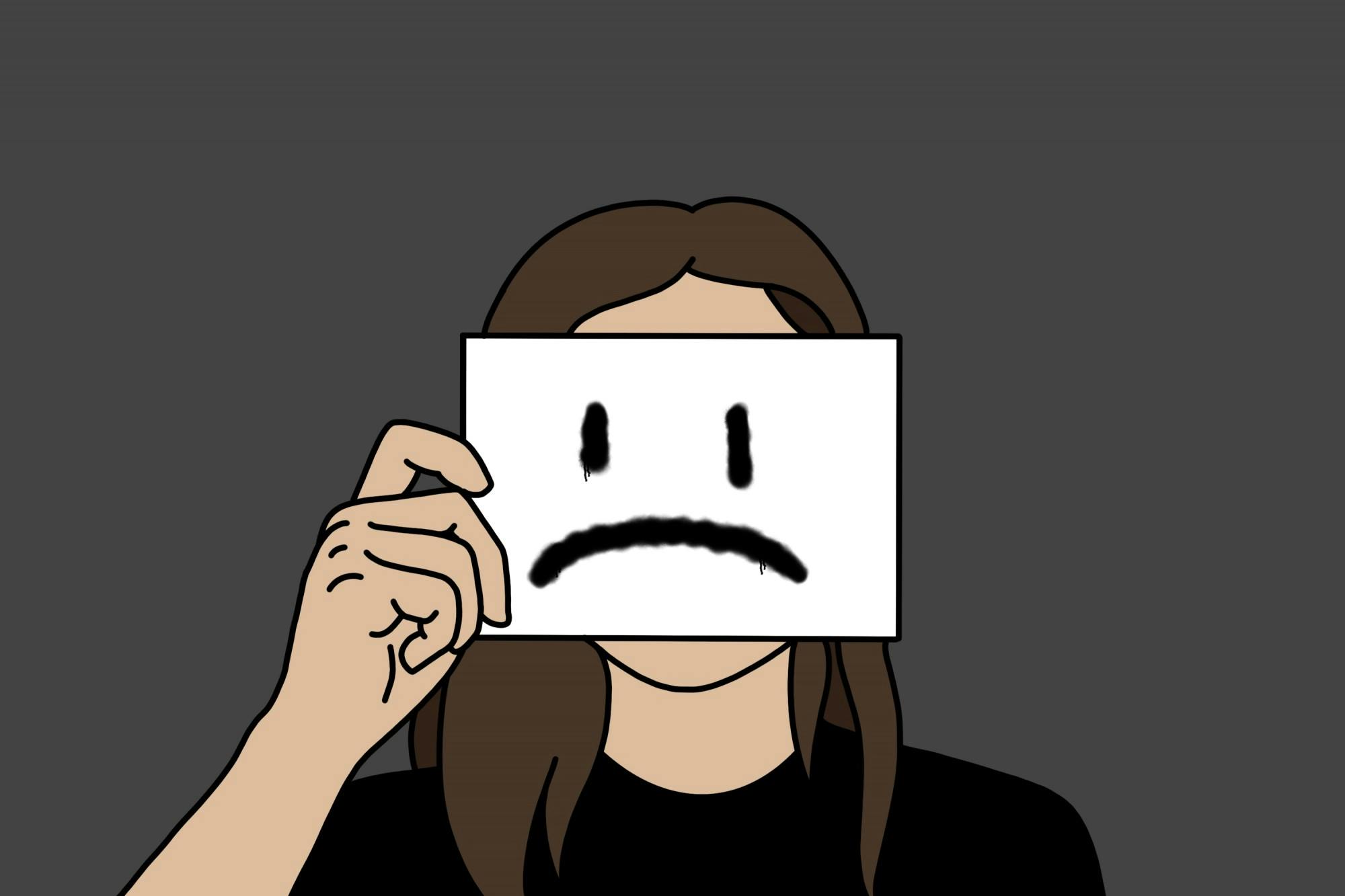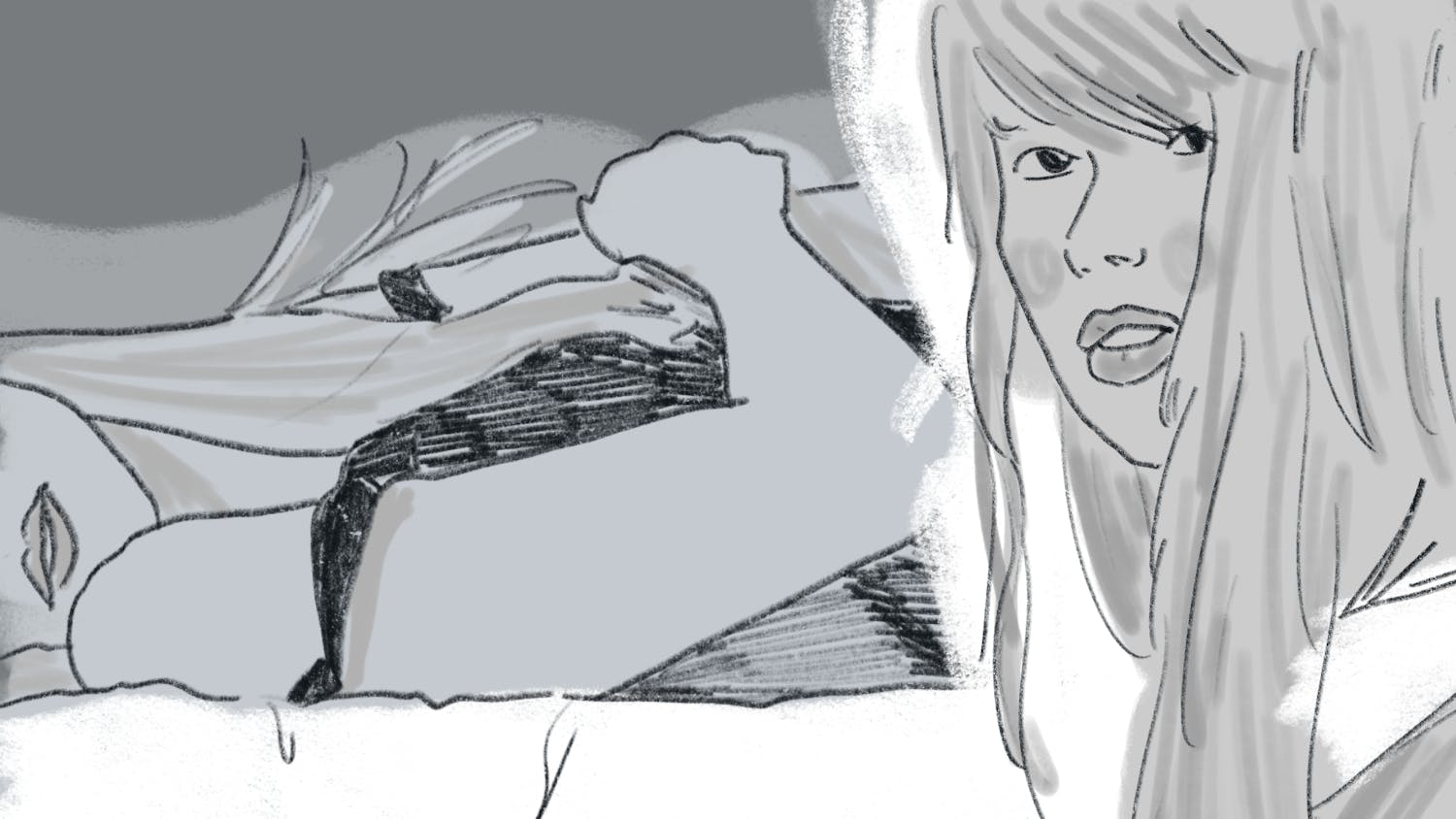Social media’s obsession with microtrends has created a revolving door of popular aesthetics — “e-girl” became “cottage-core” which evolved to “dark academia” and has recently transformed into “ballet-core.” A scroll through TikTok in the last few months reveals the increasing popularity of the television show “Fleabag,” books from Sally Rooney and music from Phoebe Bridgers. Although not explicitly named, all of these aspects and obsessions point to a larger trend: the revival of the aesthetic of being a sad teenage girl.
The modern popularity of the sad girl originated on Tumblr between 2011 and 2014. It included listening to music from Lana del Rey, Arctic Monkeys and Lorde; clothing like black Converse, ripped black skinny jeans and anything from American Apparel. In some ways, Tumblr of this time period was a way for girls to express themselves, find friends and feel heard online — when they couldn’t offline.
What became a problem, though, was the way in which these physical aesthetics became a symbol of a romanticization or glorification of poor mental health. One former Tumblr user, Levi, told i-D Magazine, “A lot of the destructive paths I was led down stemmed from the content I was being fed as a young adult on Tumblr … Aesthetics like rockstar gf, heroin chic, or ballerinacore had a heavy implication that to be cool, ultimately [meant] neglecting your wellbeing.”
Even the music and fashion of this aesthetic came with these similar implications. Lana del Rey told The Guardian that she was struggling with her mental health while promoting her popular album “Ultraviolence” in 2014. Fashionable products like black skinny jeans and American Apparel’s advertisements also pointed to a serious issue, which Tumblr in that time period tended to promote: a romanticization of disordered eating and self-harm. Another Tumblr user and current writer Ruby Staley told Refinery29 that at its worst, Tumblr users would even provide each other tips on maintaining eating disorders — rather than tips for healing.
Google searches for “sad girl” reached their peak in June 2014 and May 2015. However, by 2016 much of this aesthetic had slowly begun to fade. With the majority of users having moved to other platforms like Instagram by 2016 — and what many consider Tumblr’s final death in 2018 — this aesthetic seemingly disappeared.
In a blog post from 2017, titled “The Reign of the Internet Sad Girl is Over — And That’s a Good Thing,” writer Devcollab discusses her personal experience with the aesthetic of sadness. She explains that when an entire aesthetic is hinged upon being sad, there is no room for people who want to heal mentally: “When there’s an onus on performative, calculated vulnerability, there’s no reward for sincerity.” In other words, the internet sad girl encourages girls to stay sad, because to be sad is to be interesting, according to Devcollab.
However, the sad girl is now having a resurgence. With the rise of social media microtrends, aspects of this aesthetic are more easily spread, and the material needed to create this aesthetic is now widely accessible. A year ago in January 2022, the number of videos on TikTok with the hashtag #2014tumblr had 125.9 million views. Now, in January of 2023, that number has more than doubled, now standing at an ever growing 342.5 million views. As it seems, the aesthetic is back — or at least the idea and nostalgia of it are. Overall, though, the sad girls on social media today look a lot different from how the sad girls in 2014 looked. No longer in black skinny jeans with a cigarette hanging from their lips, aesthetics like the “coquette girl” are rooted in sadness but have a brand new look. The same aesthetic, but in a different form.
The “coquette” aesthetic is characterized by hyper-femininity and softness, drawing inspiration from the nymphet character Lolita from Vladimir Nabokov’s novel “Lolita” — a young, desirable and ultimately victimized girl. Unlike the grunge aesthetic on Tumblr in 2014, the coquette girl wears white lace and frills and sprays expensive Dior perfume. She is the victim of her sadness — and that makes her interesting to people.
Other new brands of sad girl seen today are the “toxic girl” or “femcel” (meaning female involuntary celibate). These femcels are much angrier and much more focused on their emotional performance than their physical one. Some of these femcels are girls who are in their “Fleabag era” — named after the television show from Phoebe Waller-Bridge that features a woman at her lowest and self-destructing. Femcels listen to Fiona Apple, according to online publication Adolescent, and nihilistically engage in misandry, all while maintaining their somewhat vague aesthetic of messy eyeliner and dirty hair.
The broader aesthetic of sadness on TikTok, however, extends beyond the aptly named microtrends. In 2014, the aesthetic of sadness on Tumblr did not have a name — though many consider indie sleaze and soft grunge to be a big part of it — but it was so pervasive that it was generally just referred to as “Tumblr aesthetic.” Similarly, the sad girls of TikTok are hard to box into just “coquette” or just “femcel.” What remains the same across all of these different visual aesthetics is the romanticization of being sad and lonely and the community built around feeling misunderstood.
Many express serious concerns about the return of these aesthetics on TikTok, particularly because that could mean the return of the romanticization of disordered eating and self-harm that was once prevalent on Tumblr. One TikTok user expressed their concerns with 2014 Tumblr nostalgia and reminded their audience that that era of the internet was actually a time with dangerous rhetoric surrounding racism, fatphobia and poor mental health support.
Ultimately, the consumption of sad girl media and art is a way for many young women to channel their emotions. As blogger Rayne Fisher Quann writes, “[Girls] rationalize our own suffering through the romanticization of those who have suffered before us and, in turn, we provide a blueprint for the hot-girl suffering of those after. We commodify that rationalization through the era-appropriate medium (for Dorothy Parker, this was print media, and for me it’s TikTok).” Although the resurgence of the sad girl aesthetic on TikTok looks different from 2014 Tumblr, the potential dangers are one in the same.
Jessica Sun Li '24 is a sociology major and English minor from the suburbs of Chicago. She is currently the Arts editor, and her passion project is the "Dear Mirror" column. Outside of The Dartmouth, she is involved in the figure skating team and sociology research. She really wants to adopt a cat.




